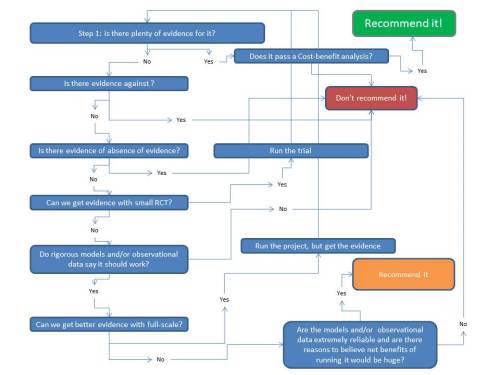“Neoliberalism” has not been oversold
Over at the Finance and Development Jonathan Ostry, Prakash Loungani and Davide Furceri asking if neoliberalism has been oversold, and implying that it has. It has not, however, and if the IMF, of all institutions, starts arguing otherwise, people will be even less willing to buy it than they are now. Because that is the implication when you say something has been oversold: someone has got to be overbuying it for their own good. But most countries, developed and developing, could benefit from more neo or just plain liberalism.
For starters, we should define what neoliberalism is. This is the kind of word that is only ever used when people are criticizing a position – kind of like calling someone pro-abortion. It is a vague term which is only used when you think you found a flaw in arguably or real pro-market policies. The charitable view, however, is that they mean the Washington Consensus, a set of policies that John Williamson, an English economist, argued everyone who was anyone in DC defended. Importantly, these policies are very well-defined, as Williamson himself outlined them in a paper. They are (and I’m copying and pasting from Wikipedia here):
- Fiscal policy discipline, with avoidance of large fiscal deficits relative to GDP;
- Redirection of public spending from subsidies (“especially indiscriminate subsidies”) toward broad-based provision of key pro-growth, pro-poor services like primary education, primary health care and infrastructure investment;
- Tax reform, broadening the tax base and adopting moderate marginal tax rates;
- Interest rates that are market determined and positive (but moderate) in real terms;
- Competitive exchange rates;
- Trade liberalization: liberalization of imports, with particular emphasis on elimination of quantitative restrictions (licensing, etc.); any trade protection to be provided by low and relatively uniform tariffs;
- Liberalization of inward foreign direct investment;
- Privatization of state enterprises;
- Deregulation: abolition of regulations that impede market entry or restrict competition, except for those justified on safety, environmental and consumer protection grounds, and prudential oversight of financial institutions;
- Legal security for property rights
Number 1 – Fiscal policy. The authors indeed mention keeping deficits small relative to GDP as a potentially harmful policy. Notably, they specifically mention that the kind of discipline suggested by the consensus – avoidance of a large debt to GDP ratio – does not have very clear positive effects on growth and may increase inequality. Let’s take that as a given and say that the Washington Consensus got that wrong. How about the other recommendations? Have countries been too eager to follow this advice and are now in a bad situation? No.
The nine remaining recommendations are still the main challenge that countries still face. I will focus on Brazil which is the country I know better. If spending in education and health has improved significantly, this has been due mainly to an expansion of the state. Subsidies have not fallen; quite the contrary. Has there been a significant tax reform? No. Tax codes are distortionary and labyrinthine. Is there enough infrastructure spending? You can bet there is not. Are interest rates determined by the market? Not always. Competitive exchange rates? Nope. Has the state implemented a large privatization program? Only a partial one. Has there been proper deregulation? No. Legal security for property rights? Not enough.
These policies would still be part of the vast majority of mainstream economist’s recommendations. It is worth noting that not even Williamson, back in the day, was a staunch advocate for short-term capital flows. He defended the liberalization of inward foreign direct investments, just as Ostry, Lougani and Furceri do.
The post in and of itself is a sober critique of some policies. It is entirely possible that Ostry, Lougani and Furceri don’t even agree with the title of their post. It is common for editors to write attention-grabbing titles which earn many clicks, whatever is actually argued in the text. If that is the case, whoever wrote the title overplayed their hand.
